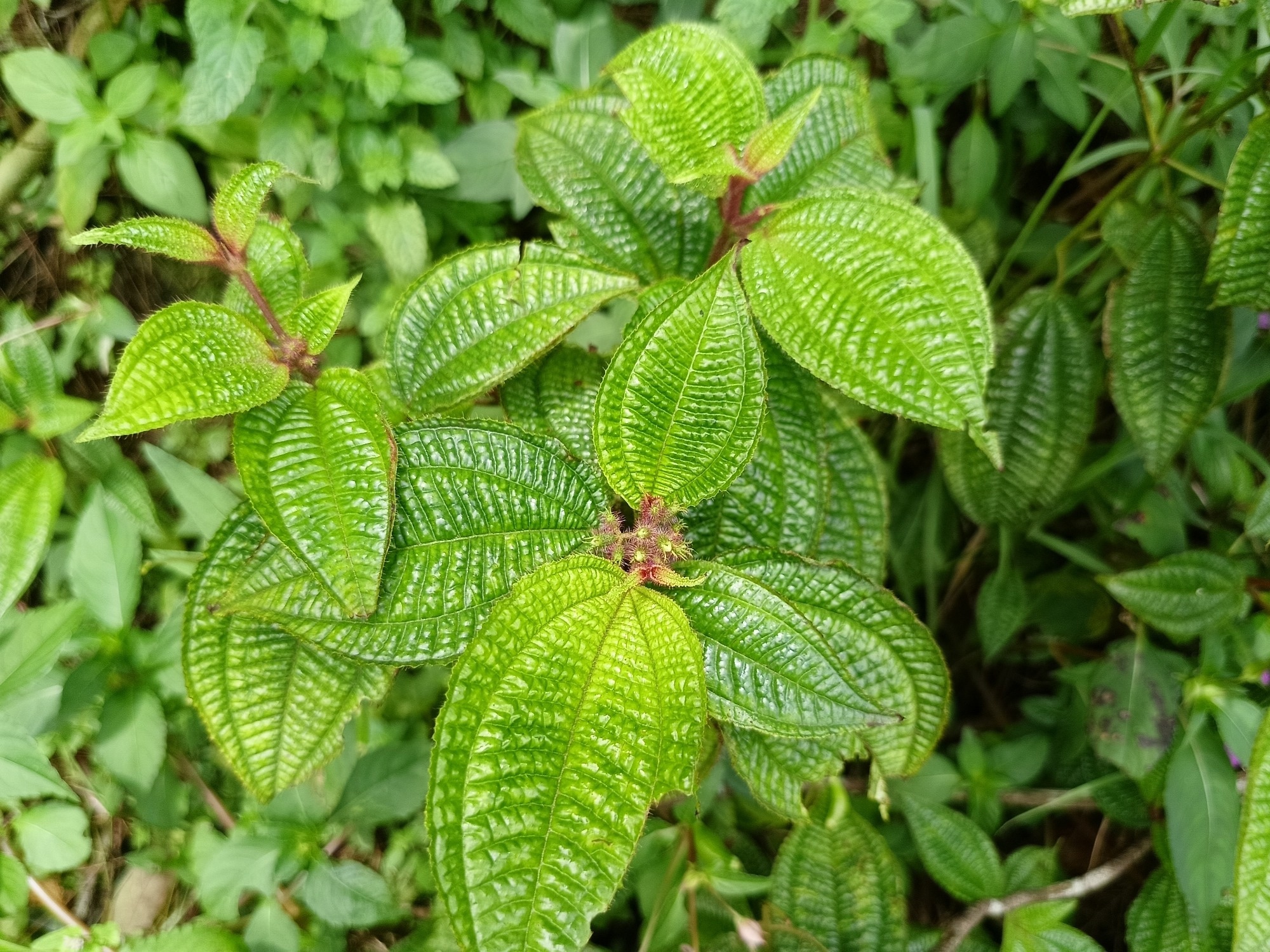New research reveals how five little-known Amazonian fruits pack a powerful punch against oxidative stress and harmful microbes, unlocking their promise for future health and biotech breakthroughs.
 Study: Lacmellea oblongata and Other Undervalued Amazonian Fruits as Functional, Antioxidant, and Antimicrobial Matrices. Image credit: LRDI_Photo/Shutterstock.com
Study: Lacmellea oblongata and Other Undervalued Amazonian Fruits as Functional, Antioxidant, and Antimicrobial Matrices. Image credit: LRDI_Photo/Shutterstock.com
Amazonian fruits, such as Miconia crenata, Grias neuberthii, Lacmellea oblongata, Pourouma cecropiifolia, and Annona edulis, are rich sources of bioactive compounds that can be utilized in the food, pharmaceutical, and biotechnology sectors. A recent study in Antioxidants determined the bioactive compounds of several of these fruits and evaluated their antioxidant and antimicrobial properties.
The health benefits of nutraceuticals
Nutraceuticals are foods or food components that offer medicinal and health benefits. Previous studies have indicated their potential in reducing the impact of chronic diseases on public health. The global increase in non-communicable diseases, such as obesity and cardiovascular diseases, has escalated the need for dietary strategies based on functional foods.
The Western diet, characterized by high levels of ultra-processed food (UPF) rich in fats and sugars, increases the risk of obesity and cardiovascular diseases. Previous studies have shown that increased consumption of non-conventional fruits could be a promising strategy to combat the adverse health effects of the Western diet. Foods derived from plant sources, marine organisms, and animals are typically rich in bioactive compounds possessing medicinal properties. For example, antioxidants can modulate metabolic pathways involved in disease prevention.
The Amazon region has rich plant diversity, consisting of several species with underexplored nutraceutical potential. Several species have traditional uses and phytochemical profiles with therapeutic and functional potential. Despite their low productivity, many governments have promoted their consumption due to their health benefits.
Traditionally, particular Miconia species have been used to manage pain, throat infections, and fever. Pourouma cecropiifolia is another Amazonian species containing polyphenols and flavonoids with antioxidant properties. However, no previous studies have characterized the bioactive compounds present in Lacmellea oblongata, prompting more research to explore these compounds' phytochemical and functional profiles.
About the study
The goal of the present study was to characterise bioactive compounds and assess the antimicrobial and antioxidant potential of lesser-studied Amazonian fruits, i.e., Grias neuberthii, Lacmellea oblongata, Miconia crenata, Pourouma cecprofiilia, and Annona edulis. It documents evidence for their use as functional ingredients in biotechnology, medicine, and food.
Edible fruit samples were acquired from indigenous communities in the province of Pastaza within the Ecuadorian Amazon region. The samples were divided into two portions, with the first used to determine physicochemical characteristics. The skin in the second sample was removed and then freeze-dried to assess its antioxidant capacity, bioactive compounds, and antimicrobial activity.
Liquid chromatography was used to quantify ascorbic acid, organic acids, and individual carotenoids. Antioxidant activity was quantified using spectrophotometric methods. Antibacterial efficacy was evaluated using a modified well diffusion method based on the Clinical and Laboratory Standards Institute (CLSI) guidelines. Antifungal activity was evaluated against Candida albicans and Candida tropicalis.
The study also employed multivariate statistical tools, including principal component analysis (PCA), to identify correlations between specific bioactive compounds and their functional activities, adding depth to the findings. PCA revealed patterns of association between particular bioactives, such as phenolic acids and carotenoids, and the antioxidant or antimicrobial effects observed.
Study findings
Concerning physicochemical characteristics, significant heterogeneity was noted in fruit weight, ranging from 0.2 g (Miconia crenata) to 242.6 g (Annona edulis). Considerable variation was present in the longitudinal and equatorial diameters, with the former ranging from 9.2 mm to 112.7 mm and the latter ranging from 7.3 mm to 80.8 mm.
A high pH value of 6.1 was noted in A. edulis, while Pourouma cecropiifolia showed the lowest pH value at 4.3. Humidity varied between 76.8% and 86.2%, while titratable acidity ranged between 0.1% (Lacmellea oblongata) and 4.4% (M. crenata). The calcium and magnesium content were highest in M. crenata, while potassium was the most abundant mineral in P. cecropiifolia. Sodium was most abundant in L. oblongata.
Grias neuberthii showed a high concentration of vitamin C at 25.4 mg/100 g of dry weight (DW). Several organic acids were studied, including malic acid, tartaric acid, and citric acid. The sum of all organic acids ranged between 1063.6 mg/100 g DW (P. cecropiifolia) and 3887.7 mg/100 g DW (L. oblongata).
The highest carotenoid content was noted in G. neuberthii at 46.1 mg/100 g DW, while the sum of the major chlorophyll and derivative compounds ranged between 0.2 mg/100 g DW in A. edulis and 45.0 mg/100 g DW in M. crenata. The lowest total phenol content was noted at 403.2 mg/100 g DW in A. edulis, and the highest at 5064.3 mg/100 g DW in P. cecropiifolia.
The antimicrobial activity against E. coli, S. aureus, and P. aeruginosa was highest in M. crenata, G. neuberthii, and M. crenata, respectively. This was based on inhibition zone diameter, not just MIC data. Assessing the minimum inhibitory concentration (MIC) revealed M. crenata as the most effective species against E. coli. For S. aureus, G. neuberthii had the lowest MIC (10.6 mg/mL), although zone of inhibition data suggested slightly broader activity. The values for S. mutans ranged between 10.4 mg/mL (L. oblongata) and 21.6 mg/mL (M. crenata). Against both C. albicans and C. tropicalis, L. oblongata showed an MIC of 20.8 mg/mL.
Conclusion
Amazonia is a rich source of nutritional biodiversity for local communities. The results confirm that Amazonian fruits are rich in functional bioactive compounds, which makes them promising candidates for use in the biotechnology, cosmetic, food, and pharmaceutical sectors.
These findings could support sustainable development in Amazonian communities, though challenges in productivity and supply chains must be addressed. However, further research, including toxicological assessments and in vivo validation, is needed to translate these preliminary findings into commercial or clinical applications.
Download your PDF copy now!
Journal reference:
- Méndez, G. and Cerna, M. (2025) Lacmellea oblongata and Other Undervalued Amazonian Fruits as Functional, Antioxidant, and Antimicrobial Matrices. Antioxidants. 14(8), 924. https://doi.org/10.3390/antiox14080924 https://www.mdpi.com/2076-3921/14/8/924